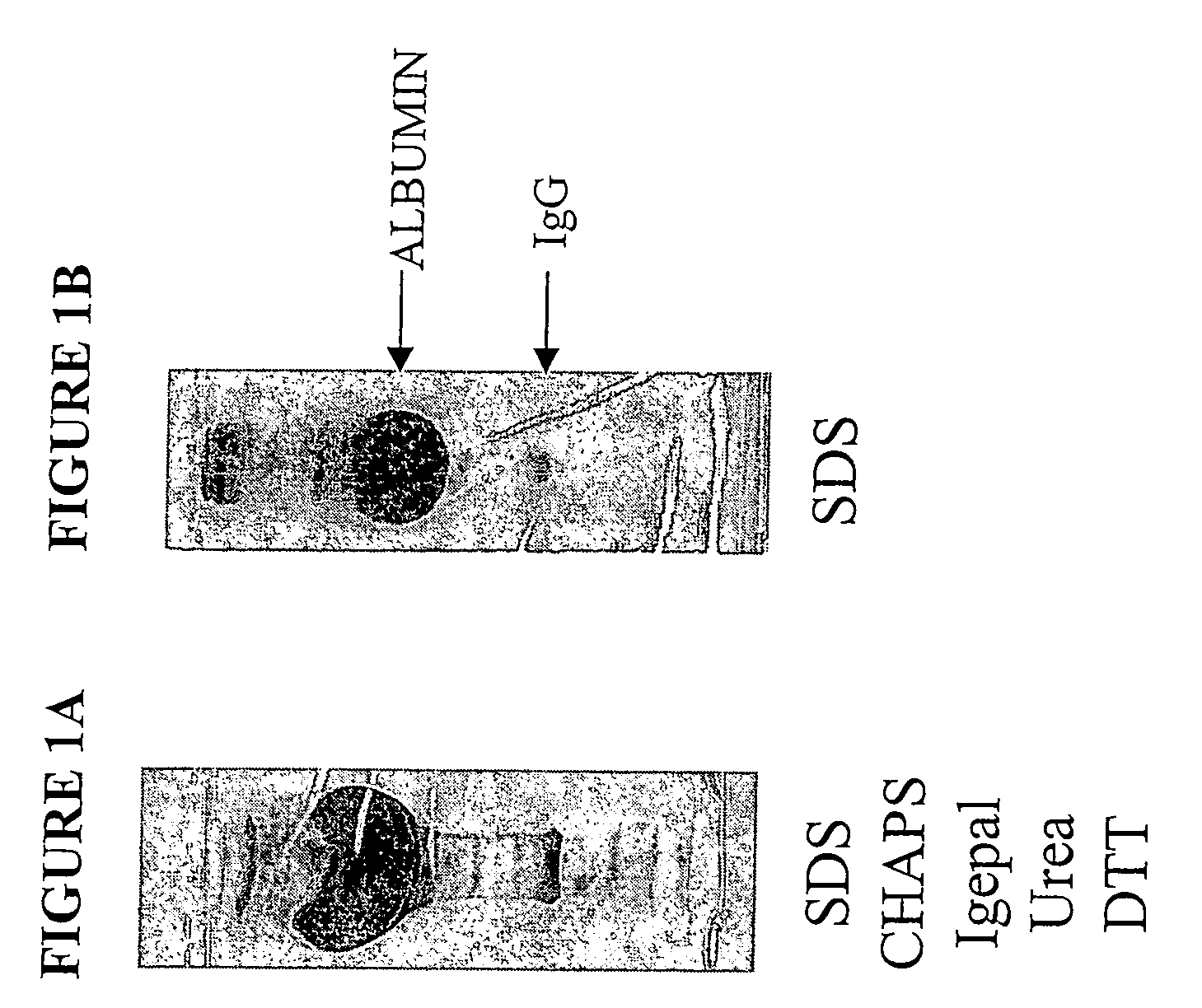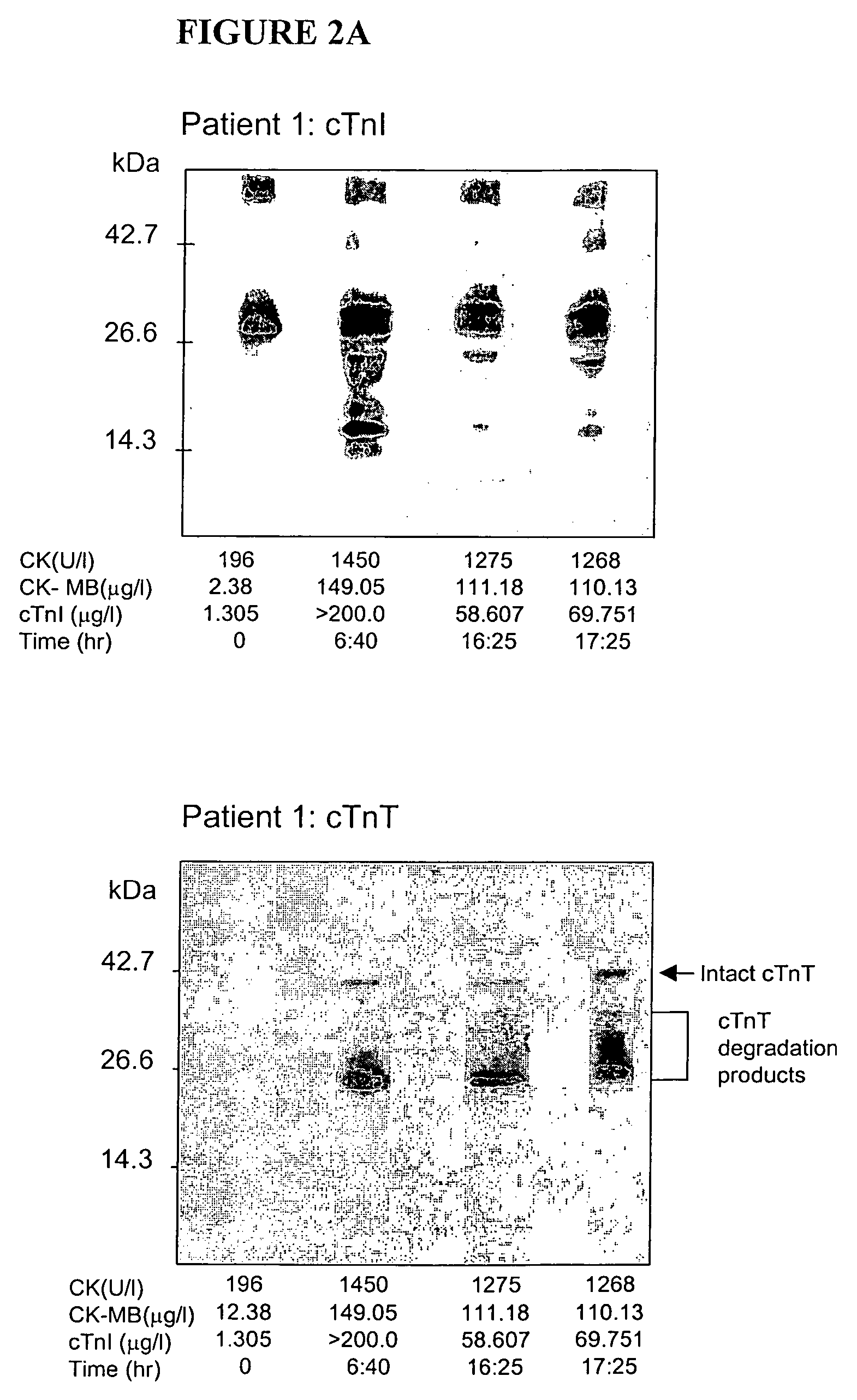Methods and kits for separation and detection of proteins in biological samples
a technology for biological samples and proteins, applied in the field of methods and kits for separating a mixture of proteins in a biological sample, can solve the problems of affecting the separation/characterization of proteins in serum and plasma, affecting the effect of serum analysis, and non-specific binding,
- Summary
- Abstract
- Description
- Claims
- Application Information
AI Technical Summary
Benefits of technology
Problems solved by technology
Method used
Image
Examples
example 1
Muscle Damage Assessment
Patient Sampling
[0079]Blood samples from 12 patients admitted to a hospital emergency department, with chest pain and unequivocal signs of AMI (based upon electrocardiographic findings) were obtained. Serum sampling was performed according to routine care protocols and not by a defined study time course. This led to different intervals between successive blood samples, thus permitting study of the occurrence of biochemical markers in a “real-life” scenario.
Routine Biochemical Testing
[0080]Blood was collected in serum separator tubes, centrifuged and assayed immediately for routine biochemistry tests. Samples were then frozen until WB-DSA. Routine testing included total creatine kinase (CK, measured by CX7, Beckman Coulter, Inc., Fullerton, Calif.), its MB isoenzyme (CKMB) and cTnI (both measured by Technicon Immunol, Bayer Corporation, Tarrytown, N.Y.). A diagnosis of AMI was confirmed if there was a typical time profile observed for CK with at least a doubli...
example 2
Diagnosing Cardiac Muscle Damage
Patient Samples
[0084]Serum samples were obtained from a prospective case series of patients presenting, within four hours onset of symptoms of ACS, to a hospital emergency department. Serum samples of ten representative cases were selected from the first 45 cases of ACS enrolled, who also had non-diagnostic ECG and non-significant elevations in the biochemical cardiac markers CK, CK-MB, and cTnI using commercially available kits. Patients underwent a history and clinical examination, a 12 lead ECG was recorded and serial blood was drawn at presentation, and subsequently at 1, 2, 4, 6 and 16-24 hours for routine clinical testing of biochemical cardiac markers and for analysis by WB-DSA. Serum samples were stored at −80° C. until analyzed. Final discharge diagnosis from the emergency department was based on standard criteria of history, physical examination, ECG changes, and biochemical cardiac markers.
Analytical Biochemical Testing
[0085]Total CK levels...
PUM
| Property | Measurement | Unit |
|---|---|---|
| pH | aaaaa | aaaaa |
| molecular weight | aaaaa | aaaaa |
| molecular weight | aaaaa | aaaaa |
Abstract
Description
Claims
Application Information
 Login to View More
Login to View More - R&D
- Intellectual Property
- Life Sciences
- Materials
- Tech Scout
- Unparalleled Data Quality
- Higher Quality Content
- 60% Fewer Hallucinations
Browse by: Latest US Patents, China's latest patents, Technical Efficacy Thesaurus, Application Domain, Technology Topic, Popular Technical Reports.
© 2025 PatSnap. All rights reserved.Legal|Privacy policy|Modern Slavery Act Transparency Statement|Sitemap|About US| Contact US: help@patsnap.com



